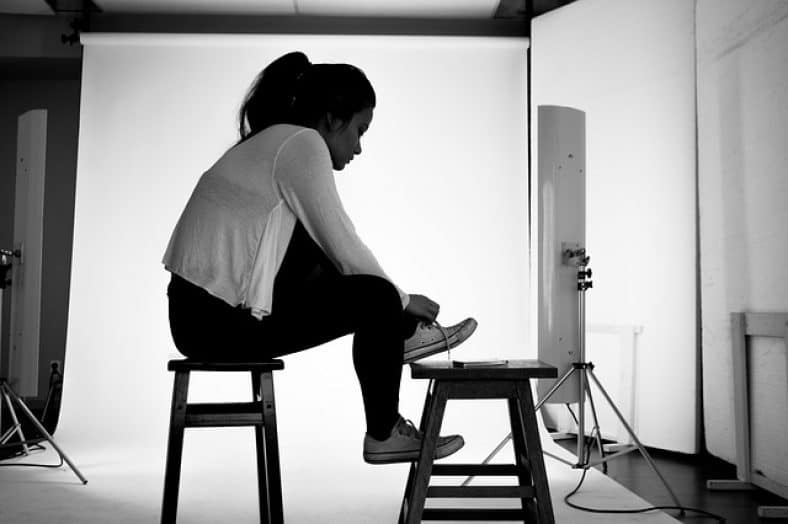Taking a photo may look simple, but it includes various factors that make photos stand out and look their best. A suitable backdrop, proper lighting, and accurate viewing angles are just a few factors contributing to a good photograph. If you want to take good photographs, you must consider these factors.
Good lighting makes it easier to see your subject matter and highlights the features you want to emphasize in your photograph. A well-chosen background sets the mood of the image and aids in telling the subject’s story.
After you’ve arranged out all of the crucial specifics for your photo session, selecting a good backdrop is simple. For human subjects, the preferred photography backdrops are valuable to your theme and correspond with the reason for their photographs.
Capturing a wedding moment, a birthday party, or a football match may be the purpose of a photo shoot. The recommended setting should be a unique and easily recognizable area within the event. The altar, for example, is an easily recognizable backdrop for a church wedding. Yes, the outfit of your bide maids will indicate that it is a wedding, but the backdrop will give the image additional depth and detail.
A child’s first football game is another example. Football’s goal would make the best backdrop. This will aid the viewer in recognizing the photo’s location and event.
Studio backdrops
The best photography backdrops will improve the look of your subject if the photoshoot is taking place in a studio. They should therefore aid in emphasizing the attributes of your subject to make it stand out.
Studio backdrops are simple to use, easy to create, and perfect for creating outstanding photos. All you’ll need is some open space and a stable source of light. Ensure the backdrop doesn’t clash with the subject or take the focus away from the subject.
To prevent casting shadows on the backdrop, position the subject at least 3 yards away from it, regardless of the backdrop you choose. This all comes down to how lighting sets are used strategically. The idea is to have the background fade away behind the subject, allowing it to become the focal point of attention.
Photography backdrops that do not clash with the subject’s makeup and clothing are recommended. You should avoid using a royal blue backdrop if your subject wears a light shade of orange or pinkish makeup. The backdrop should complement the subject’s reason for having their pictures taken. For instance, suppose your subject wishes to offer up modeling photographs to a fashion magazine?
Some backdrops, especially white seamless paper, may require different lighting. If you fail to light the backdrop, you risk having uneven colors behind the subject, which will detract from the photograph and make hiding the backdrop challenging.
Another scenario is if your subject desires to publish modeling pictures in a magazine about fun sports. Even if you have mountains and sunshine backdrops in the studio, wouldn’t it be better to have the photoshoot outside, given that the subject aims to present photographs with an outdoor theme?
Planning your backdrops
Always organize your backdrop, whether it’s for an interior or outdoor photoshoot, and scrutinize the aspects you desire to include or exclude. When doing an outside photo session, please ensure there are no onlookers or commuters behind your subject. They will shift the focus away from the subject. It’s fine if the bystanders are too far away to be observed, but it all relies on your subject’s preferences.
Ensure your backdrops have no obvious stains, wrinkles, or fading patches for indoor photo shoots. It will distract from the image and make it appear unprofessional.
Indoor backdrops
If you’re shooting indoors, you may set the subject on the floor around a fireplace. Ensure there’s always a fire, or the final print will look like a black hole or on top. The photographer may well photograph the subject on and around the living room furniture.
Outdoor backdrops
They are indeed a fantastic way to make your portraits more unique. Wedding and family photographers frequently employ them to tell a more compelling story, add extra joy to their shots, or simply make their images stand out.
It’s not always possible, however, to go out and place your curtains somewhere. However, you could take the photo shoots in the backyard or anywhere that means something to the subject.
Outdoor backdrops can be difficult to deal with, but you should give them a try if your budget allows. To give the sense of an indoor place, some photographers employ doors and fences. Other photographers employ simpler methods, such as using paper to create Polaroid-like frames. Others take their stands outside and cover them with curtains. The options are limitless.
Photography backdrops Considerations
Whenever you’re planning a family or individual photo session, consider photography backdrops as well as the amazing things they can do for your photos. Keep in mind that they will always range from simple to complex ones.
However, whatever you do, bear in mind that the focus should be on the image itself, not on the backdrops. Also, be extremely careful about where you place the backdrop, as the wrong placement could result in a very unnatural or fake-looking photo.
In conclusion
Always pay close attention to the smallest details and attempt to understand what your client desires. These will consistently guide your instincts in selecting the ideal photography backdrops.
